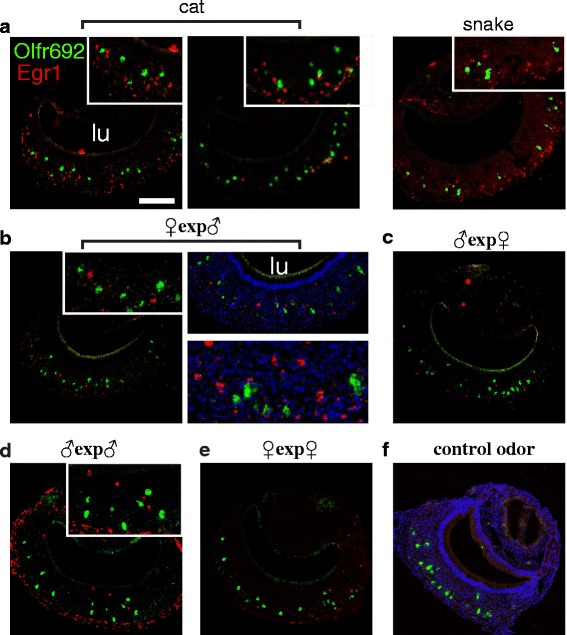Fig. 5.

Olfr692 cells are not activated by predator odors nor by same- or opposite-sex conspecific individuals. Double fluorescent in situ hybridization for the marker of vomeronasal neuron activation Egr1 (red fluorescence) and Olfr692 (green) in animals exposed to a range of biologically relevant stimuli: (a) Adult male C57BL/6 mice exposed to heterospecific stimuli from cat (left) or snake (right), which have been shown to robustly activate the VNO [32] and to elicit defensive behaviors [14]. Insets are higher magnification images of the corresponding panels to evidence absence of co-expression of Egr1 and Olfr692. (b–e) Adult C57BL/6 mice exposed to same-strain male or female adult mouse odors. (b) In female mice exposed to scented bedding containing male odors and in male mice exposed to the odors of (c) female or (d) male adult mice, a number of VNO cells are activated, but none overlap with the expression of Olfr692. (e) In female C57BL/6 mice exposed to female odors, activated cells are virtually absent in the VNO. (f) Control animal exposed to unscented bedding. Similar results are obtained upon exposure to clean gauze. Microscopy images are representative from the set of scored sections indicated in Additional file 7: Table S1. See quantification of Egr1/Olfr692 co-labeling counts in Additional file 7: Table S1. lu, VNO lumen. Scale bars represent 100 μm. Nuclear staining is To-Pro-3 labeling (blue)
